Airline Merger Wars
The battle for the soul of an airline
/https://tf-cmsv2-smithsonianmag-media.s3.amazonaws.com/filer/82/6b/826b035a-71c8-47bf-8caa-d0892f2fa5e6/merger-composite.jpg)
My dad began his career as a National Airlines ticket agent in New Orleans in 1962. At the time, National was promoted as the “Airline of the Stars,” with ads featuring grinning Hollywood actors, and my dad was proud to be part of it. National had a history going back to 1934, when it used a fleet of two Ryan monoplanes to move passengers and mail around Florida. Eventually, National’s story ended like so many airline stories do today: It was bought by another airline. In 1980, National was acquired by Pan American World Airways.
In 1982, my dad was transferred to Pan Am’s flight control facility at John F. Kennedy International Airport on Long Island, New York. By then, the airline industry was reeling from numerous mergers, acquisitions, and the advent of low-cost startups like People Express. My dad considered retiring. To airline employees, it felt like a carrier was always a pen stroke away from an investor’s liquidation or an auctioneer’s gavel. Even the mighty Pan Am was broken up and sold off to American, Delta, and other carriers just a few years later, in 1991.
I thought of Dad recently, one afternoon at the Dallas-Fort Worth airport as I boarded a US Airways flight to Charlotte, North Carolina. Soon, this Airbus would sport an American Airlines logo when the merger between the two companies, announced in early 2013, was complete. (The companies were legally combined in December 2013, after a brief Department of Justice anti-trust suit was settled, but it will likely take until the end of 2015 for all operations to come under a single banner.) The US Airways inflight magazine offered the expected “We’re becoming a better airline” spin. Doug Parker, American Airlines’ chief executive, smiles in a photo a few pages inside, and a page in the back features the combined fleet, showing many of the same aircraft models in their respective liveries, side by side.
As with other global industries, the airlines can survive only if they respond to large economic forces, and past decisions to combine fleets and personnel may have helped make it possible for almost anybody to travel almost anywhere today. But remembering my dad’s experience, I wondered how mergers look from the inside—that is, to the people who report to work every day as their employer changes its identity. In the case of American and US Airways, despite management hopes for unity, the two carriers are still very distinct entities.
The initial skirmishes have already taken place at the union negotiating table, where for pilots and flight attendants in particular, nothing means more than the seniority list, which determines base pay, type of equipment flown, and preferred scheduling. And given the complexity of buying another carrier in today’s airline industry, sometimes you’re planning a merger with at least one airline that hasn’t fully completed a previous merger. Just to make things more confusing, the name the airline chooses to continue operating under doesn’t indicate who came out on top. Doug Parker was once the head of America West Airlines; when America West acquired the bankrupt US Airways in 2005, he became the chairman of a new US Airways, which then acquired American Airlines; each time the company assumed the name of the more recognized brand.
A tangled web of union contracts resulted. “At some point, all the happy hand-holding is going to go away,” said a first officer at American in early 2014, shortly after the integration began. He and many other current airline employees were willing to share their stories, but unwilling to be identified for fear of reprisals from their carriers or unions. “We’re going to spend months fighting each other,” the pilot said. “We’re going to have a situation [similar to] where US Airways is with America West Airlines. There’s still no seniority list.” In March, the US Airways pilot union filed suit against American in U.S. District Court over how their seniority lists would be merged; as of December, the lists remain separate. “We’re really not at the clash-of-cultures stage yet,” he adds. “We’re operating completely separate airlines.”
The tension can spill over into the cockpit. Although the pilot says the incidents are isolated, he recalls hearing about a US Airways captain who refused to allow an American pilot to ride in the jump seat—a professional courtesy extended thousands of times a day across virtually all airlines all over the world. The snub was widely condemned among the flight crews of both airlines, and the US Airways union reminded their membership that fellow aircrew should be treated with respect.
Even when a merger appears complete to the public, such as the 2010 marriage between United and Continental Airlines, the inner workings often take years of litigation and negotiation to settle. United is in the midst of a four-year plan to integrate the two carriers; it has managed to execute a labor agreement for the combined flight crews, but operation is another story. Fly United today and you’ll be serviced by a crew from United, or a former Continental crew in United uniforms, but never a mix of the two companies on a single journey.
“They’re kind of doing things in steps,” says a flight attendant hired by Continental in 1983 who now works for United after the merger. Under the current union negotiations, legacy United and Continental airliners can only be flown by their legacy crew, but these airplanes are moved around to meet a route’s demand. “Management can switch planes several times on any given route,” says the attendant. “This flexibility is great for operations but causes havoc in the flight attendant ranks.” Until the contract negotiations, which have been going on for four years, are finished, crews cannot predict what cities and routes they’ll be on from month to month. And United’s decision to not invest as heavily in its domestic fleet is evident to passengers familiar with the old Continental, he says. “Continental was a launch customer for the Boeing 787,” says the attendant. “We have entertainment in the seat backs. You get on one of [United’s] 757s and it’s like stepping back to the 1970s—they still have the big, clunky TVs in the overhead you bonk your head on.” But what feels like chaos at first can eventually settle down. A year ago, says the attendant, he felt “that we’ve dumbed down to ‘big United,’ we have management making decisions and mistakes we made 30 years ago.” Now, he says, “These were two very big battleships coming together...I may have felt that we were in free-fall a year ago, but I feel like we’ve turned the corner and may actually pull this thing out after all.”
Nevertheless, in an industry where mergers have been fueled by bankruptcy after bankruptcy, the dynamic that plays out as crews begin to work together—in the cockpit, on the ramp, or in the aisles—is one of the conqueror and the vanquished. “I’ve never met a group with so many arrogant captains,” says a former Northwest Airlines pilot who now flies for Delta, after the merger in 2008. He recalled sharing the cockpit with a Delta captain during one approach for landing. The indicated airspeed was 205 knots, but the maximum speed for the Boeing 757’s flap setting was 195 knots. The Northwest pilot adjusted the flaps. “Did I get a ‘Thank you’? No, I got a ‘How dare you touch the flap lever without my permission,’ ” he says. “I’ve flown with some nice [Delta] guys and gals. But in my opinion, their management is very rank-structured: captain, first officer, flight attendant.” At Northwest, he says, flight and cabin crews worked together more as a team, not as a “Do as I say” hierarchy.
There was probably no bigger clash of cultures than the one resulting when Pan Am purchased National. Pan Am was essentially the originator of airliner culture, but National had a colorful history of its own. The smaller, mostly domestic carrier had recently become known for its cheeky and suggestive 1970s “Fly Me” campaign, which featured attractive female flight attendants, come-hither looks, and aircraft adorned with women’s names embellished with red hearts.
National employees, my dad liked to say, were just Regular Joes—an extreme contrast to the Pan Am folks. He recounted that while he was waiting to board a Miami-bound Pan Am flight at JFK, the boarding pass printer at the gate failed. A growing scrum of passengers approached the counter while the procedures-driven Pan Am agent struggled with the machine. Finally a National gate agent stepped forward, took a stack of blank passes, told everyone to get in a line, and started handing them out. As my dad told it, the National agent quelled the rebellion with a simple “Get on the damn airplane.” Crisis solved.
In the cockpit especially, National’s blue-collar ways didn’t mesh well with Pan Am’s white-gloved ethos. “You couldn’t have had two more different cultures,” says Steve Peterson, who was flying Boeing 727s for National during the merger. “At National, we were allowed to make our own decisions. At Pan Am, there was a rule for everything…. The chief pilot and people in charge at National had a pretty good feel for what the captains could do and trusted them.”
Pan Am crews, Peterson says, carried themselves with an air infused with the legacy of founder Juan Trippe, immortalized in a famous photo: dapper suit, pipe clenched in his teeth, surveying his office globe for new regions of the world where he could send one of his Clippers. The Pan Am mystique could still be seen as late as 2002 in the movie Catch Me if You Can, in which Leonardo DiCaprio impersonates a Pan Am pilot after witnessing some of them in their tailored 1960s finery being pestered for autographs by young boys who were just as star-struck as if they were chasing astronauts. “The Pan Am guys felt they were better than any other pilots,” Peterson says. “Maybe it was all the gold stripes and white hats.”
Peterson recalls how National and Pan Am crews dealt with mechanical issues from the cockpit. “When a National captain and crew made decisions, the chief pilot usually backed them up. With professional engineers who held [airframe-and-powerplant] licenses, it was like having a mechanic on board,” he says. “At Pan Am, when we had a problem, we were encouraged to call it into the company and let them handle it. There was more micro-managing of crews by the company.”
Peterson witnessed, with some admitted schadenfreude, the plight of Pan Am pilots when the airline was sold off after declaring bankruptcy in 1991. Delta bought many of Pan Am’s routes and assets and absorbed many of its employees. “I would sit and listen to all these Pan Am guys complain,” Peterson says. “And secretly I’d think, ‘Finally you guys are seeing what it’s like to be on the bottom.’ That’s why there’s always so much animosity, because there’s always a winner and always a loser. When we went to Delta, we were all losers.”
For employees of the most storied carriers, the end came hard. To those who wore the uniform, Trans World Airlines, a company that in its long history had been led by legendary figures like Howard Hughes, World War I ace Eddie Rickenbacker, and Charles Lindbergh, was much more than a corporate brand. “TWA, when it was in its peak through the ’60s, ’70s, and ’80s, was a more personalized airline,” says Jerry Warkans, who begain his career as an inflight customer service manager for TWA and finished it at Los Angeles International as manager of fueling for American, after it acquired the three-times bankrupted TWA in 2001. “[TWA] was big, but it took care of its people.”
But Warkans admits that TWA employees certainly had a chance to play the conqueror in the game of mergers. He remembers when it acquired the regional carrier Ozark in 1986: “A lot of Ozark people rose in the ranks, but some of them—one of them was my best friend—were not treated well by TWA people.”
In 1961, United merged with Capital Airlines, a struggling carrier that traced its lineage to Clifford A. Ball, who operated an early airmail route in 1926. By 1955, Capital was operating Vickers Viscount turboprops and Lockheed Constellations, as well as DC-3s and -4s. Toward the end, Capital started operating a few Boeing 720s (a version of the 707 developed to land on short runways) on contract with United, but otherwise, it was a small, propeller-driven airline. If you were a Capital pilot, how would you be incorporated into United, if you could be at all?
“I was on the 1965 negotiating committee that merged the two seniority lists,” says former Capital pilot Clyde Luther. “[United] worked to protect their people and keep all the Capital people off the [jet-powered] DC-8.” During a two-year freeze, he says, Capital pilots could only fly United’s propeller-driven DC-6s and -7s. As the airline’s two seniority lists began to merge, Capital pilots began to fly United’s jets too, including the DC-8 and 737.
“They were seat-of-the-pants pilots,” says Bud Cochran, a 30-year veteran of United who had amassed nearly 18,000 hours in the Boeing 737 by the time he retired in 1998. In 1968, when Cochran was hired, he shared the cockpit with former Capital pilots, who he describes as “good to excellent pilots who flew the airplane first and worried about the procedures second.”
Cochran recalls the differences when departing from airports where noise abatement was mandated. The Capital pilots would take off and then “zoom climb” to altitude. “They were not flying the procedure, but in my opinion, it was as good or better. They were just different guys in how they handled the airplane. If you were a copilot and didn’t do what they wanted, they wouldn’t have much to do with you…. I really felt they handled the airplane better than the United pilots did.”
Occasionally an airline merger can bring out the best practices from each player. At Southwest Airlines’ Dallas headquarters, where you’ll see employees playing full-court basketball in the parking lot, another merger (or “integration,” as Southwest senior executives prefer to call it) is under way. AirTran Airways is still technically operated as a separate carrier, although the two have shared a single Federal Aviation Administration operating certificate since March 2012. Up until the end of 2014, when Southwest’s branding finally subsumed the AirTran name and livery, booking a Southwest flight would get you either airline, or, if your trip required a connection, perhaps a combination of the two.
Wearing a snappy sport coat, Greg Christopher is overdressed by Southwest standards. One of six network directors at Southwest headquarters, where he is lit by the dim glow of dozens of monitors, he oversees operations for both Southwest and AirTran. In the center, the ruling ethos is that the two airlines are operating as one. The flight attendants from each airline may service the cabin differently, but differences can’t extend into the decisions made in the cockpit or by flight operations. “We don’t want Southwest pulling out of Baltimore because of snow showers while we still have AirTran operating,” says Christopher.
A particular difficulty is managing both AirTran’s hybrid point-to-point and hub-and-spoke model and Southwest’s point-to-point route map, which it has held on to tenaciously since the 1970s. “Southwest is much more intense,” he says; the airline operates about 3,400 flights a day with more than 600 aircraft, while AirTran has about 700 flights and 130 aircraft. Ultimately, the two models and the vastly different scale of operations are just too difficult to integrate, so the company will permanently keep operations separate.
That Christopher is in charge of operations is notable, because he’s an AirTran convert, not a Southwest veteran. “Southwest came in strong and assured us that we’d be treated well and that we’d have jobs,” he says. “Their people culture really shined through.” Only two AirTran dispatchers, Christopher says, chose to retire rather than convert to Southwest.
In another corner of the building, Sonya Lacore, Southwest’s senior director of inflight customer service, sits in an over-wing row of the crew trainer, a Boeing 737 fuselage section. The trainer is part of the “Airport Experience,” a facility that includes check-in kiosks and gate counters and is a classroom for all new Southwest hires. Wearing a leopard-print dress, Lacore has a soft, calming delivery. Just the person you’d want to oversee your cabin fire, severe turbulence, or water evacuation, all of which are simulated here via hydraulic rams, smoke generators, and inflated rafts outside the cabin windows. A new class enters, and soon a potential flight attendant is struggling to close a several-hundred-pound galley door with the reassuring “ka-chunk” familiar to any frequent flier. New candidates are eliminated if they can’t master the FAA requirements; for instance, some are sent home if they can’t deliver emergency instructions in the simulator with enough authority to take command of the cabin.
There are two versions of the flight attendant classes now: one for novice attendants to learn procedure, and one for AirTran Airlines veterans to learn how to be an ambassador of the Southwest brand. Once she’s strapped in, the average flier may not notice a big difference in how she’s treated, but at the corporate level, cabin crew procedures are a serious business: In a business with razor-thin margins, superior customer service can help an airline compete for passengers and is therefore part of the relentless drive for profitability.
Lacore has great respect for AirTran, which she views as very well run; it has an almost military ethic, mirrored in the appearance of its flight attendants (female flight attendants were required to have their hair tightly bound up). Some AirTran crews had a difficult time accepting that flight attendants could wear shorts and polo shirts, while others liked the new freedom. Regardless, Lacore’s mission is to take the best of AirTran and fold it into the indelible Southwest persona.
“No disrespect to the past decisions of their leaders, but it just wasn’t who they were,” Lacore says. “Our customers have come to know us, and they’re looking for some fun, some laughter and some jokes and some songs. There were so many AirTran flight attendants that had that in them, but some of it had been suppressed. And so they were able to finally express themselves, which I thought was so cool to see them get to do that. They almost didn’t trust us at first: ‘I can really sing and I won’t get in trouble?’ ”
Another step was getting AirTran crews to embrace Southwest’s egalitarian ethic, exemplified by such features as open seating on its flights. And, Lacore says, “they use the cart on their aircraft, and we use the tray.” Lacore believes the tray prevents the usual queue of lavatory-bound passengers from being blocked by the beverage cart, and allows flight attendants to be mobile, smiling, and focused on other passenger needs as they ply the aisle.
“Our short hauls were foreign to them too, so they weren’t used to getting up as soon as our flight attendants do. At 10,000 feet,” Lacore snaps her fingers, “they’re up.” Early in its history, most Southwest flights landed in destinations scarcely an hour away, but as the carrier grew, so did its routes. Lacore says their flight attendants are absorbing information from AirTran’s crews about working longer flights, such as handling onboard customs paperwork as Southwest prepares to fly to Mexico—its first international routes.
While Southwest continues to integrate the best of both worlds with AirTran, Doug Parker, over at American, says he’ll be adding a TWA-painted aircraft to the American fleet and will retain at least one US Airways-liveried jet as a morale booster for employees who wore that logo on their uniforms. But the culture clashes will continue as long as one airline is gobbled up by another, likely to go unnoticed by the ever-increasing number of passengers, dozing in coach and forever hungry for a cheap seat.
/https://tf-cmsv2-smithsonianmag-media.s3.amazonaws.com/accounts/headshot/Sotham_photo.jpg)
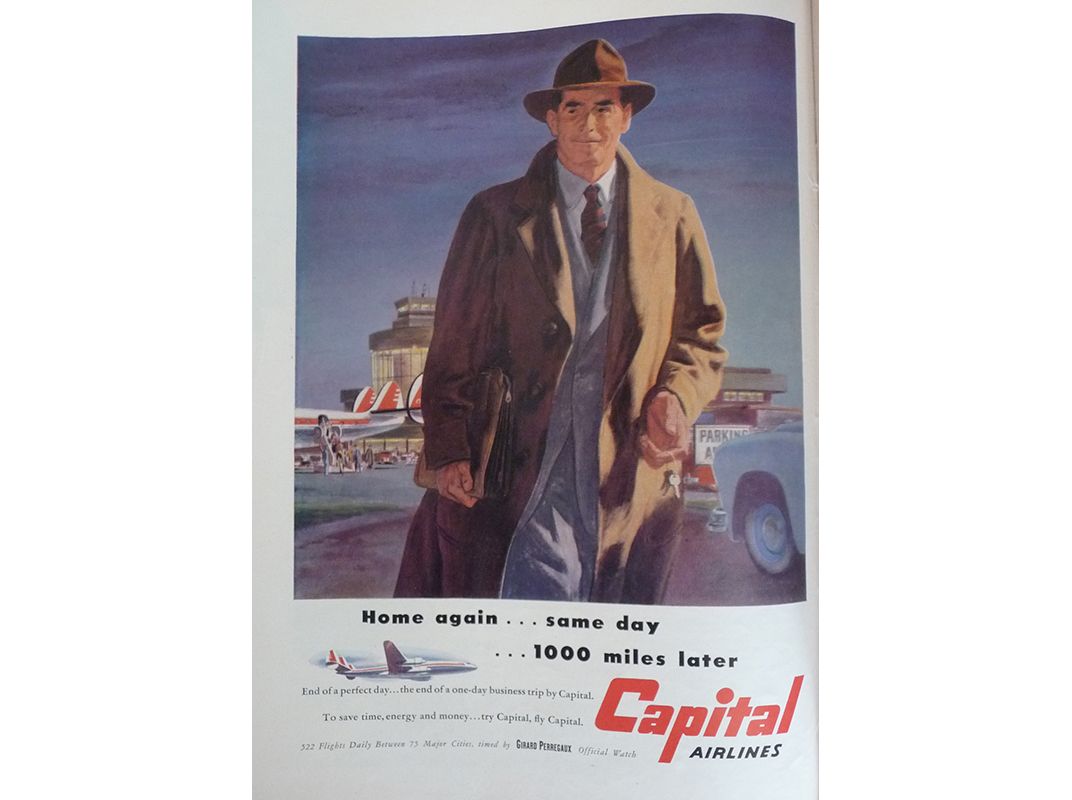
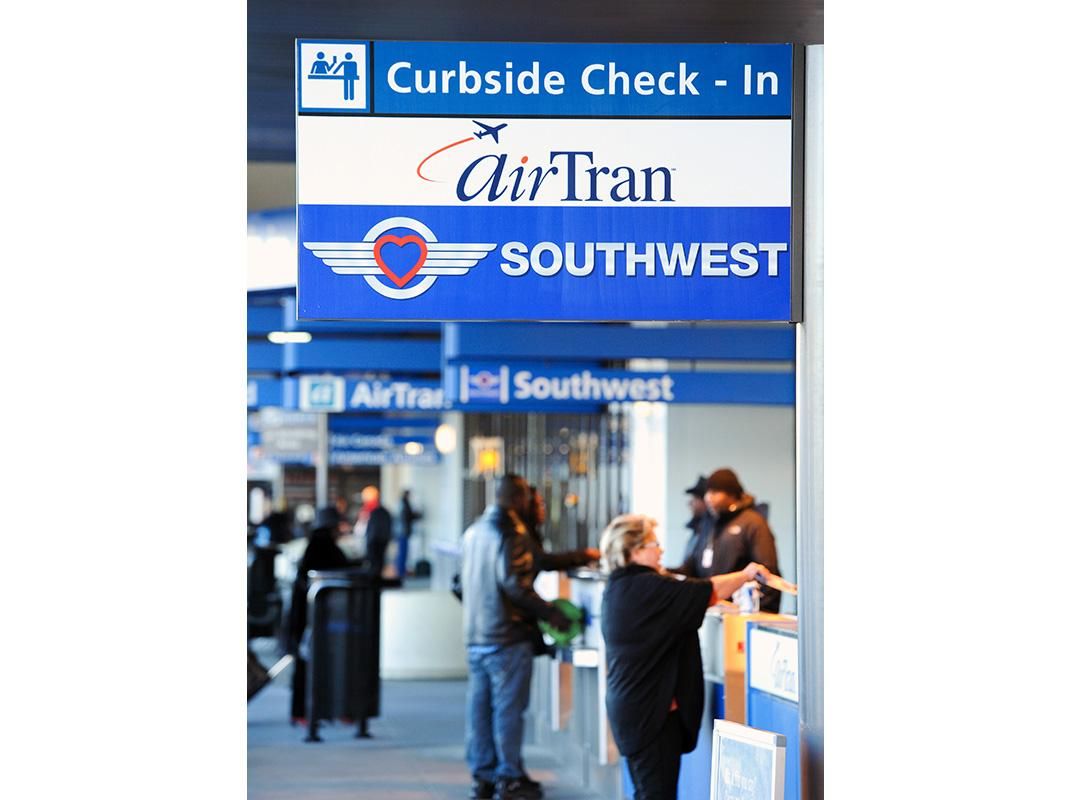
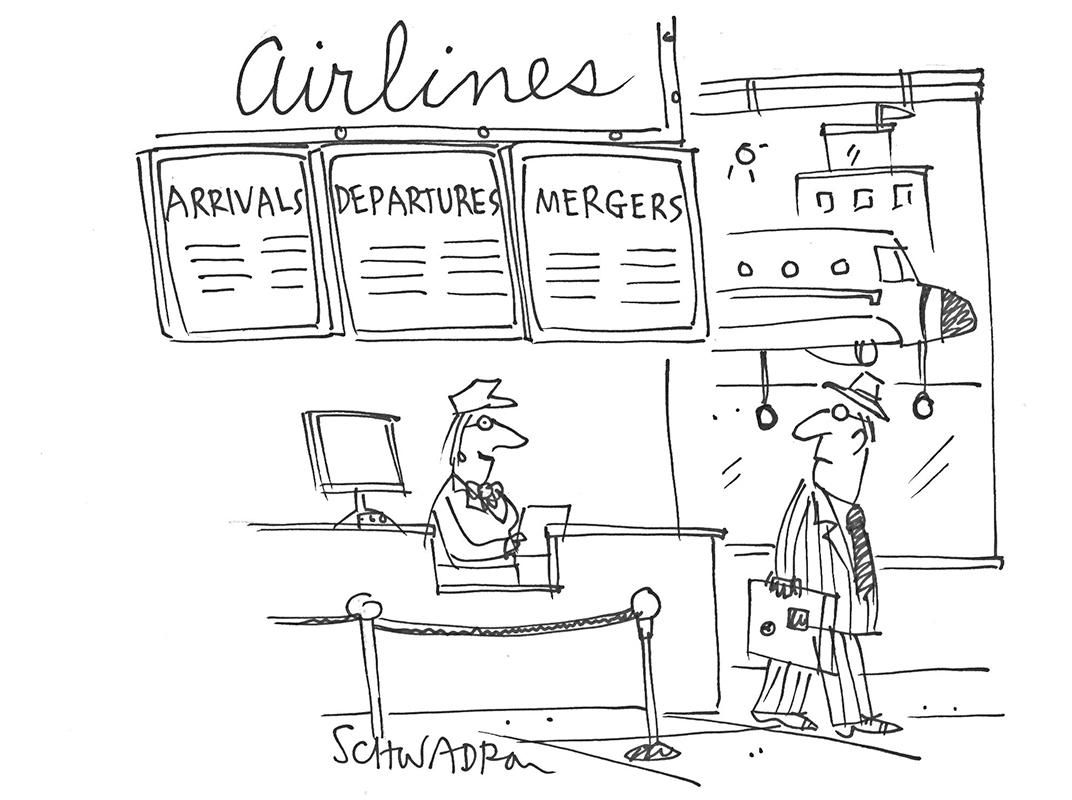
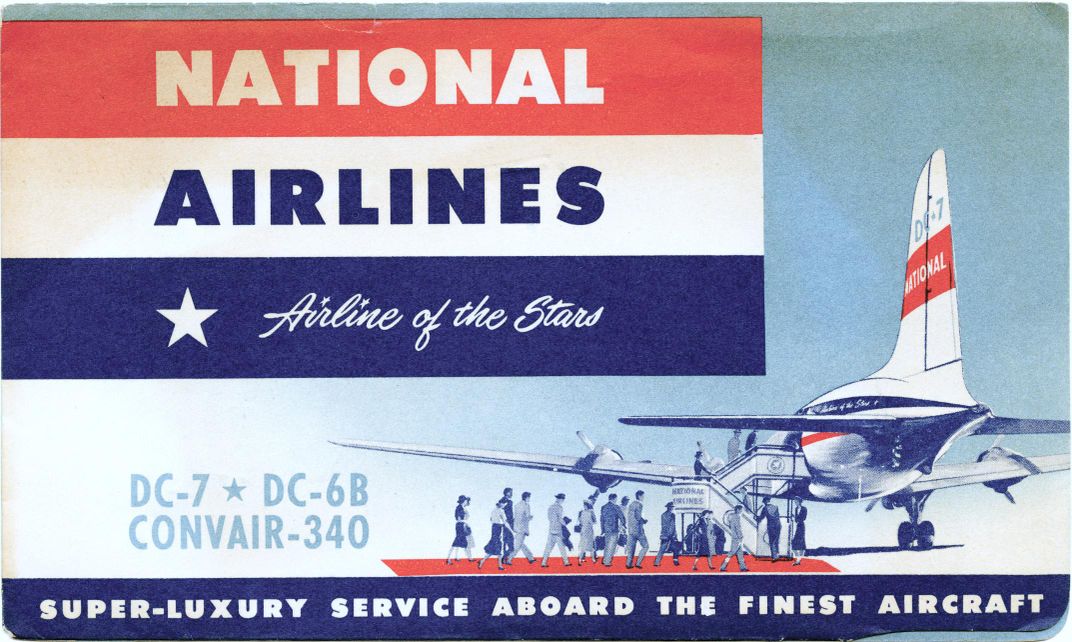
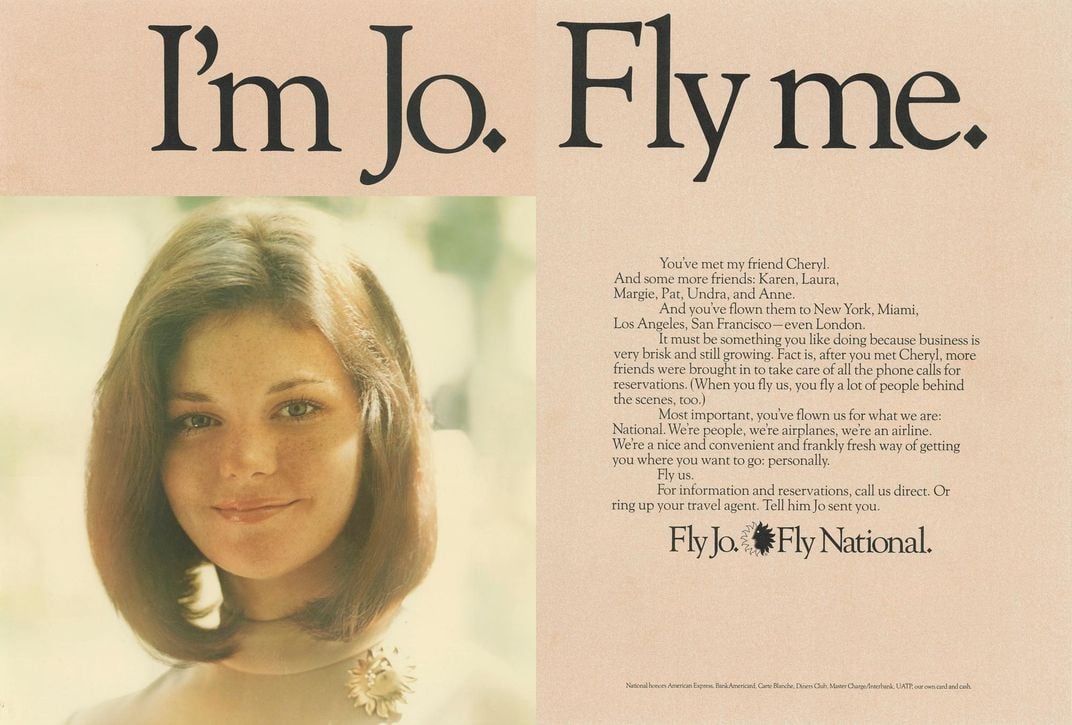
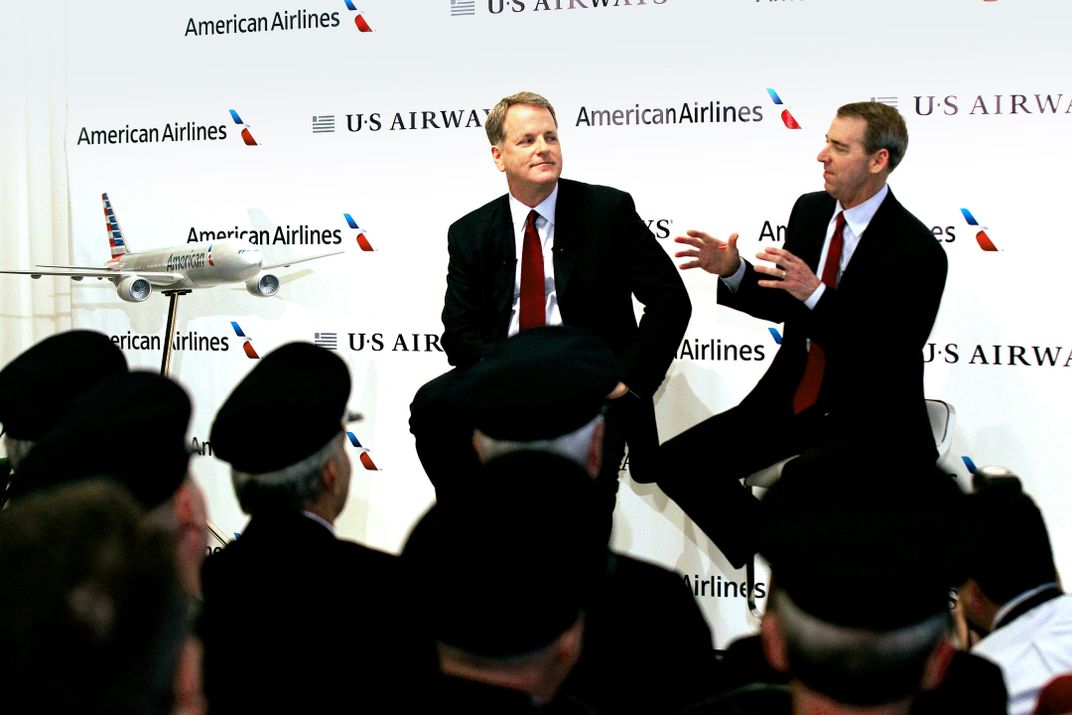
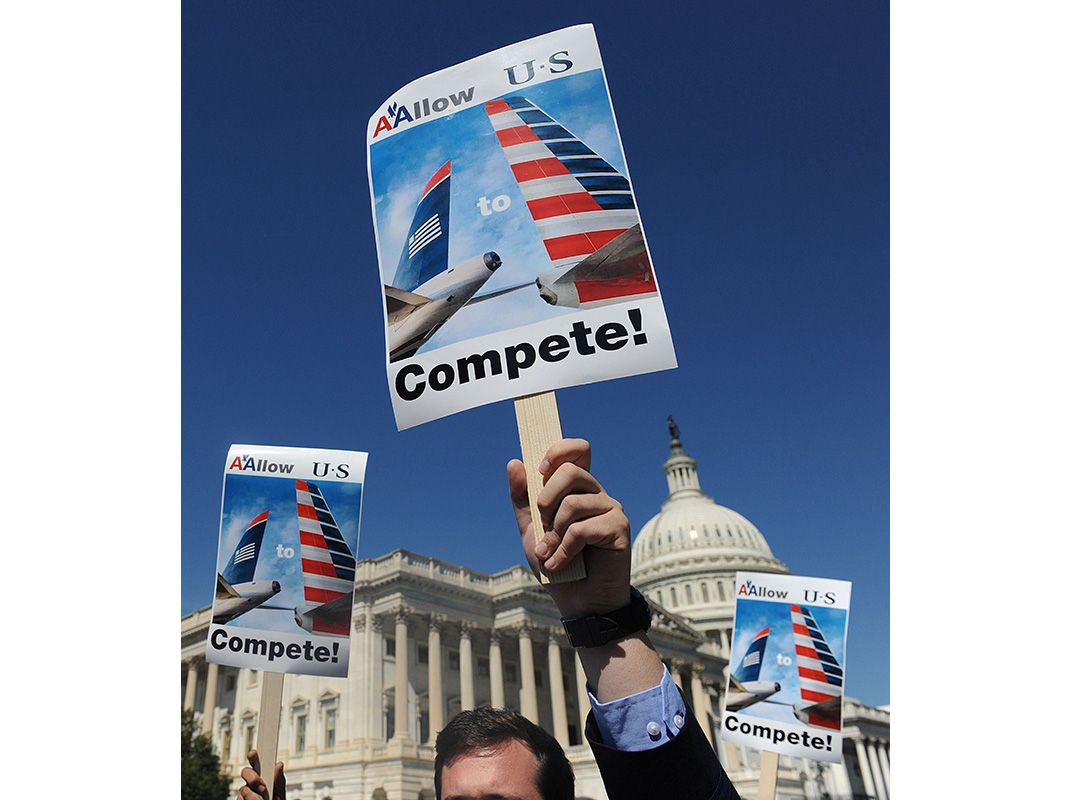
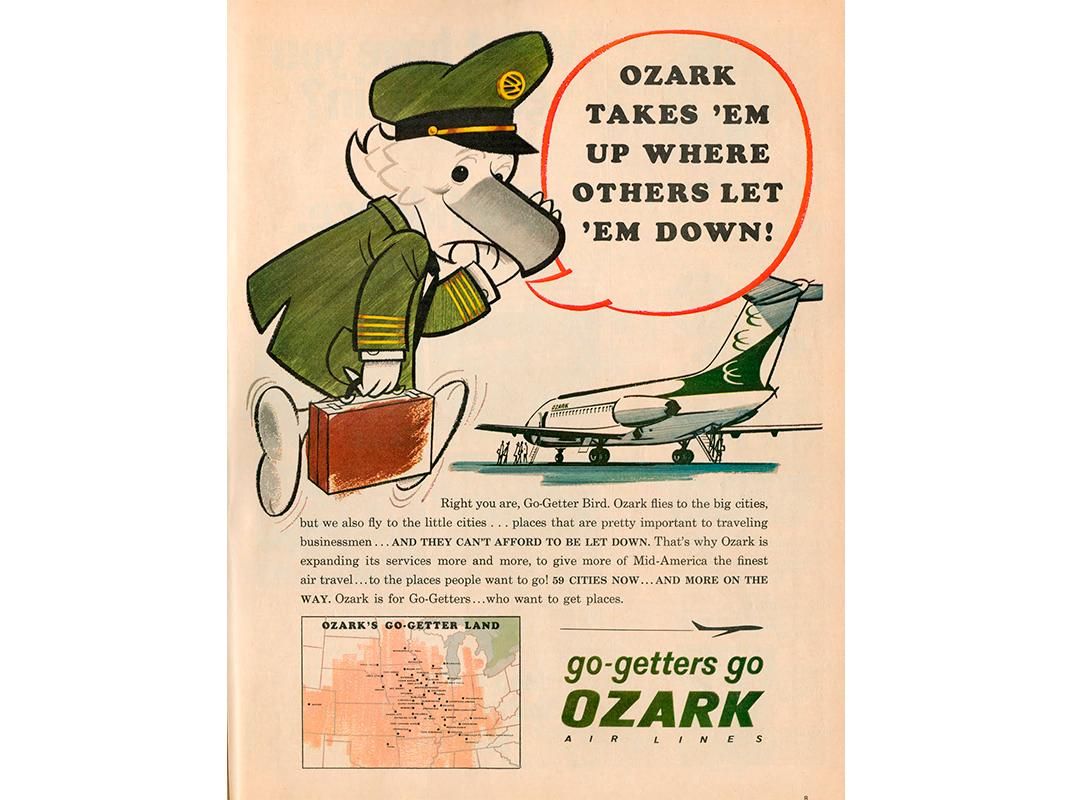
/https://tf-cmsv2-smithsonianmag-media.s3.amazonaws.com/accounts/headshot/Sotham_photo.jpg)